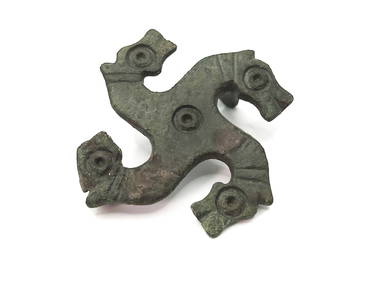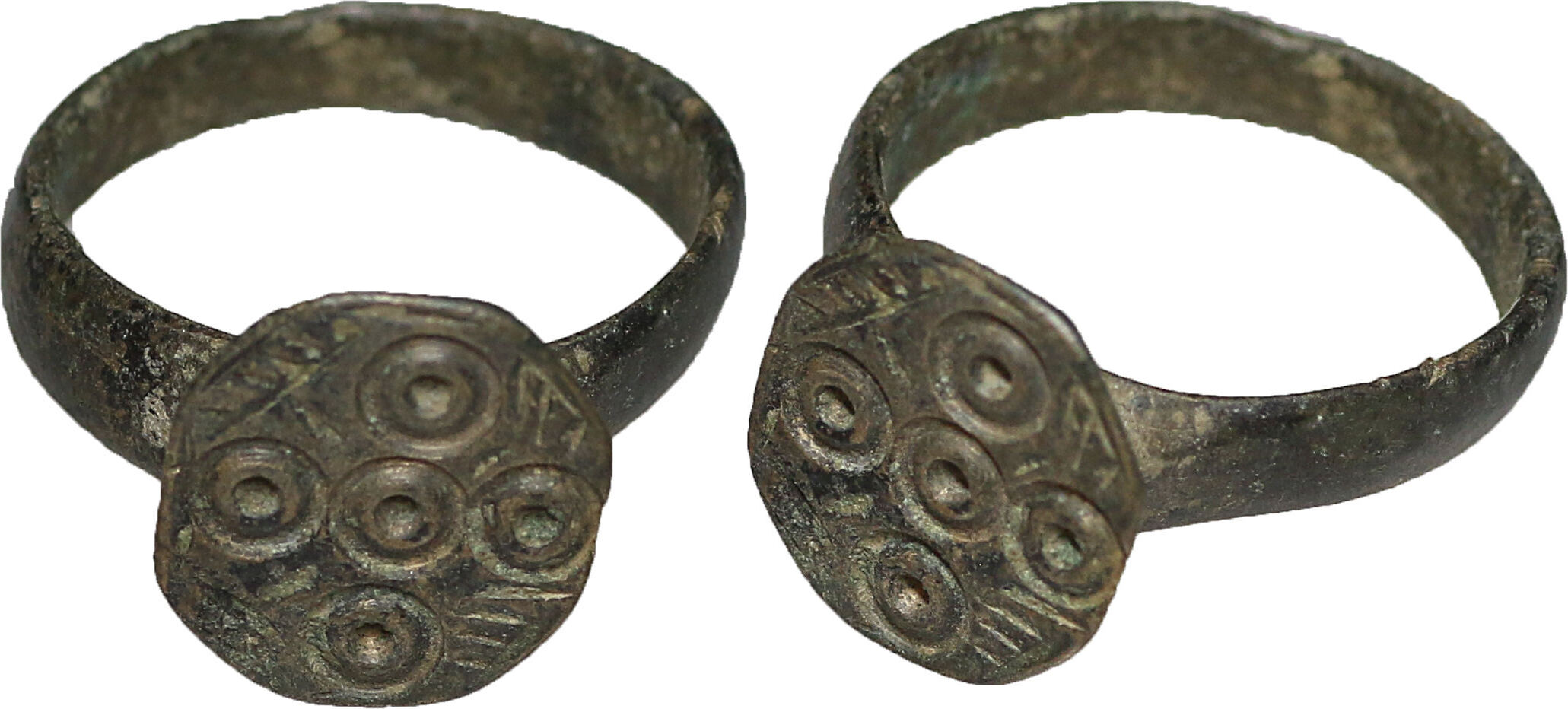So, just a prop? I wouldn’t argue with that, other than to wonder why these fortune-tellers only used it in a certain part of the Empire when fortunetelling was ubiquitous in Roman culture (in a way that I’m not sure a lot of modern Western people really grasp).
I wonder too. That’s why I can’t go all in on the fortune teller explanation. It could be a secondary function just like many if not all of them were used as a candle holder at some time. Some kind of symbol of royalty or rank, or a guild sign could have been their original intent and some ended up in the hands of conjurers and the like. If I was telling fortunes or selling Philosopher’s Stones I’d like a prop like this.
It’s use for fortune telling is also an easy explanation to retrofit, just like saying it’s a ritual object or simply a decoration. These are things that have no basis to rule them out, but also lack much basis to rule them in either.
This thread goes on an on because it’s a mystery, at least to us modern folk who don’t see any obvious purpose for them. We can see that some simple explanations don’t hold water, again within the limits of our modern world mindset.
Concentric circle decoration have been pervasive in Western Europe since the Stone Age. As I pointed out in this thread before, it’s a motif that was used in petroglyphs then, later to decorate Cypriot pottery, and damn straight, the Gallo-Romans used it - here it is on a mirror, here on a fibula, here on some belt stiffeners…
And while I was getting those, I see Mangetout also provided plenty of examples
That’s not to say the dodecahedron couldn’t be the centrepiece of some sort of game. It could. We don’t know what it is, so that also means we can’t rule out some possibilities.
But the notion of them being used like dice is just sort of weird. Sure, they look a bit like a D12, but they are made of bronze, some of them are the size of grapefruit, others have no very obvious way to distinguish one face from another, and they have knobs on. I don’t see how they would function very well as dice.
Could the knobs be used to hang them via some circular net-like hanger which wraps around like 5 of them on the outside?
At any rate, you could hang the docecahedra from either the knobs or through the holes. Then, when it swings, the shadows that are cast through the holes will change with the angle and size of the holes. This could be useful both for a bauble and for fortune-telling, since the shadows would be ever-changing and nebulous to be interpretable, yet obvious enough to be unmistakably present. If you hang them from the knobs then you wouldn’t have cords messing up the “clean” shadows.
The knobs would work a bit like buttons if you wanted to poke them through a small buttonhole-like slit cut into leather (maybe a leather strap). They would also be quite convenient for tying on pieces of twine or cord.
But it seems like there has been some effort put into making them work as feet/standoffs, so the object can be placed in any orientation on a surface, but with the main body of the thing slightly set off from the surface.
That’s the thing, the ones on top aren’t water pumps, at all. They’re decorations. The bottom one is far more likely to be correctly identified as a water pump with missing internal parts.
It’s very hard to find a functional purpose for something that’s ultimately decorative.
Sure, but my point is, you could then have people arguing (like we’ve all done above) that it (the bottom one - a real water pump) can’t possibly be a water pump, because look at this other, very similar-looking thing that is definitely not a functional water pump.
That is missing the point a bit, what was the reason for that symbol? Or I should say: what makes you think that that symbol was not in reference to what dice and the dodecahedrons were used?
The decoration on the various examples of these objects is not alike and some don’t have any decoration at all. If we are to assume they have, or mostly have, a common purpose (and I’m not sure we can, but if we do), then the decoration would seem to be just decoration. Otherwise how are the undecorated examples used?
The reason the inscribed circles exist on the faces of some of the dodecahedra is (I think) the same reason they appear on a great many other objects; they look pretty, and they are one of the easiest decorative motifs to form - you just need a tool with two points.
I’m not sure if this is what you mean, but reading your post my mind immediately thought of the various cord/webbing “fasteners” that operate via friction. Like these for webbing, or the ones on some jackets/athletic wear, for cinching waists/cuffs/hoods.
I could imagine cords/ropes of different diameters being passed through the holes and looped around the knobs. Different holes for different diameter cordage. But I’m SURE this is not THE answer, because these are far too complicated for such a mundane purpose. I would expect to see much simpler analogues as well. I offer this - mainly because I was surprised at how immediately it jumped to my mind, but also hoping it might foster some thought by those of you far more informed than I.
As for this, I will speculate that the dodecahedrons could had been related to druid augurs (that did not bother to write anything AFAIK) that were exterminated by the Romans before the 2nd century. IIRC a lot of that involved burning their homes and worship places, the speculation here is that (what I suspect) the leather pieces that covered the dodecahedrons where gone, but Romans that where doing the pillaging found the neat objects to use as their trophies of war.
It could be also that the ones that came after the Celts and Gauls were conquered by Rome, also did their burning of villages and the remaining dodecahedra were also kept as their trophies. Ending in burial places locations next to or where the Roman army was also.
Are you saying that these objects might have been completely covered with leather in order to be thrown like dice?
If what I think is correct, I do think that some augurs realized that with less well to do customers, there was no need for decorations that were not seen once the prepared leather or wooden pieces were applied to the fortune telling dodecahedron.
Uh, you did not see how the metal knobs were used to keep leather pieces in place with similar dodecahedra from 200-100 years ago? (Cited earlier)
Yes, they might be unrelated, but I do think that those modern zodiac dodecahedrons show how the ancient Romans/Gauls could have use them.
If they’re to be covered up with leather, why are any of them ornate at all?
Now you are undermining your argument that it was easy to do those ornaments. I do think that just sometimes they did not bother, just as some times, the ancient Romans did not use the concentric peeps in some dice examples.
You don’t think it’s a bit weird to go to the trouble of making a hollow, bronze dodecahedron with differently-sized holes and (in some cases) engraved decoration, then covering it up entirely?
The later examples are (I believe) wooden forms, covered with leather, with a round headed nail in each vertex. If we opened one of those up and found that inside, was actually some quite intricately-formed and decorated framework, I would find that strange. I would want to know why go to all that bother.
I suppose you could argue that there was some mystical significance to the hiding away of the rather intricate object inside a leather ball, and I couldn’t possibly argue with that.
No, when one does take human nature into account. I do think that weights could had been added by the augurs, then those inside the dodecahedron were covered by the leather piece.
Then as now, I do think that the augurs loved to know what the “fate” of the customer was going to be, especially when they had a very important customer.





